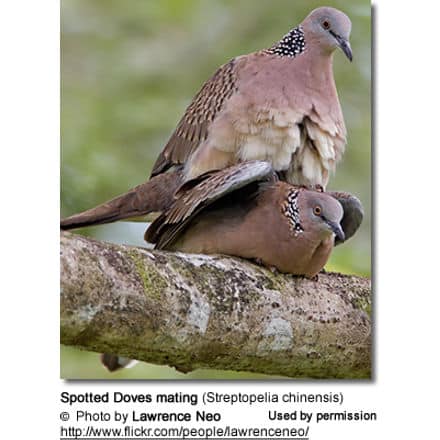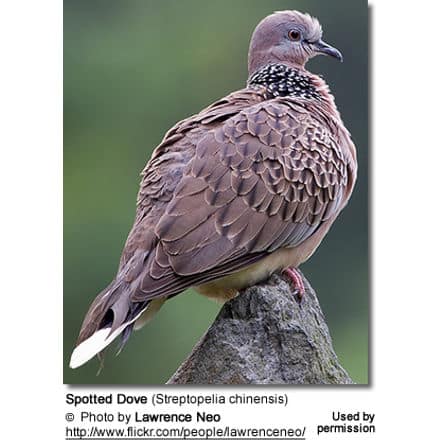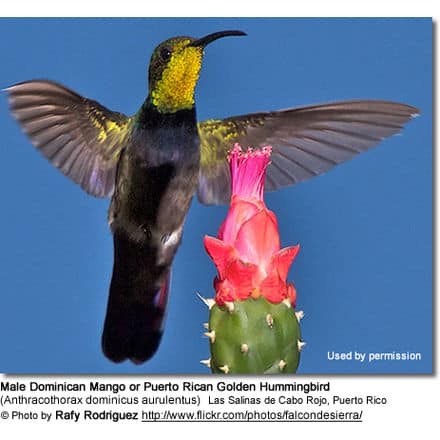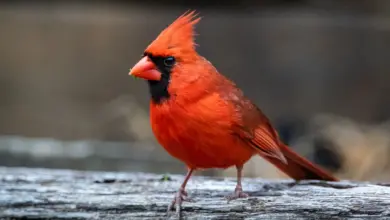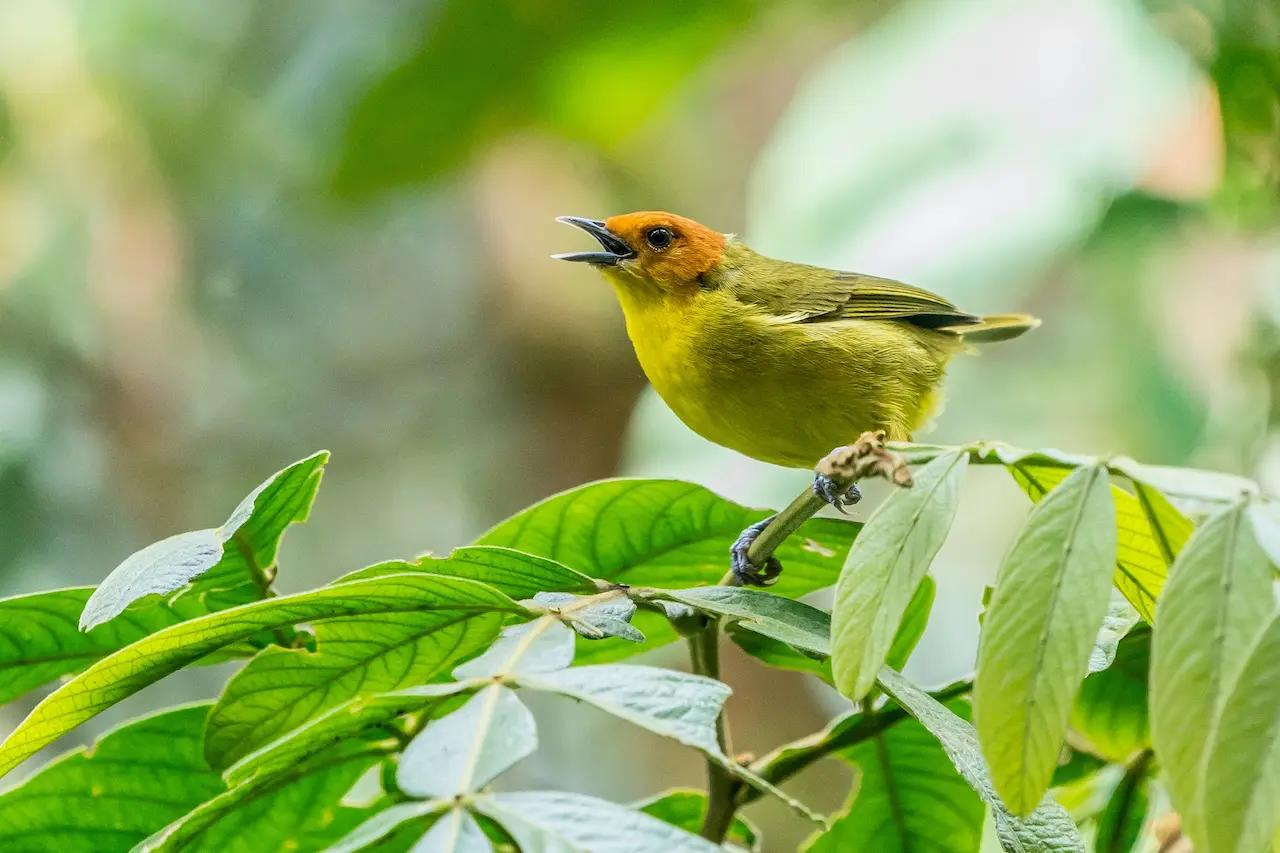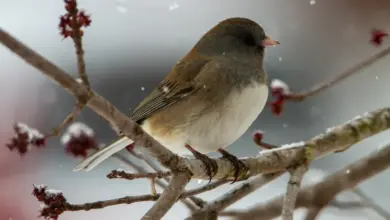Spotted Doves or Turtle Doves
Spotted Doves (Spilopelia chinensis)
Dove Information … Index of Dove Species … Photos of the Different Dove Species for Identification
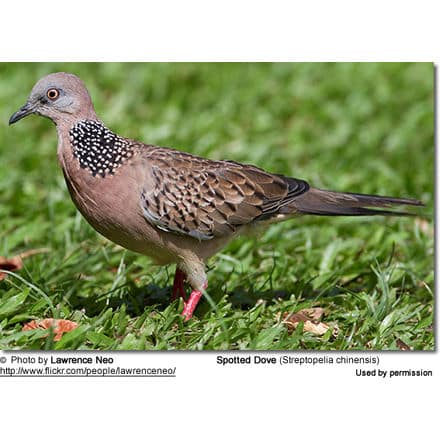
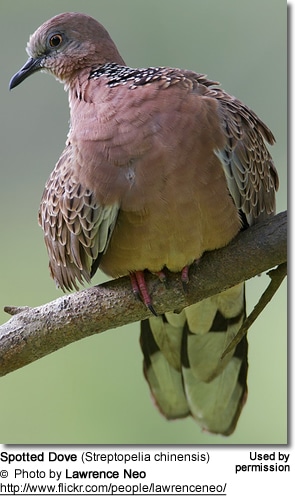
Overview … Alternate (Global) Names
Distribution / Habitat … Subspecies, Ranges and ID
Description … Calls / Vocalizations
Breeding / Nesting … Diet / Feeding
The Spotted Doves (Spilopelia chinensis formerly Streptopelia) – also known as Spotted Turtle Doves – are native to tropical southern Asia.
They are most easily recognized by the black patch with white spots on the back of the neck.
Distribution / Habitat
These doves occur naturally throughout Southeast Asia. Introduced populations have also established themselves in the United States (Hawaii and Los Angeles area, Southern California), northern Indonesia, Australia, and New Zealand.
In Australia, they are found around the major towns and cities in southern and eastern Australia; specifically from Hobart, Tasmania north to Cooktown, Queensland south to Port Lincoln, South Australia. They can also be seen in Perth, Pemberton, Kalgoorlie, and Esperance, in Western Australia
Their habitats are open woodland and agricultural areas; and they have also adapted well to urban areas, and are common in streets, gardens, and parks. They generally don’t venture into deep forests.
Even though these birds are mostly sedentary, young birds may disperse to find suitable home territories. They are usually seen alone or in pairs, in particular during the breeding season.
Subspecies and Ranges:
Recognized Races:
- Spotted Dove / Chinese Spotted Dove (Spilopelia chinensis chinensis – Scopoli, 1786) – Nominate Form
- Range: Myanmar to central and eastern China (Sichuan, western Yunnan, and Hainan northern and eastern to Hebei) and Taiwan. This race is also believed to be the one that has been introduced into Hawaii.
- Spot-necked Dove (Spilopelia chinensis suratensis – Gmelin, JF, 1789)
- Range: Pakistan, Nepal, and India south to Sri Lanka, and east to Bhutan and Assam.
- Burmese Spotted Dove (Streptopelia chinensis tigrina – Temminck, 1810)
- Range: Bangladesh, extreme northeastern India, Burma (also known as Myanmar), and Thailand through Indochina, Philippines, and Greater and Lesser Sundas to the island of Timor.
Races not universally recognized:
- Spilopelia chinensis ceylonensis – Ripley, 1948
- Range: Sri Lanka
- ID: Fine rufous or buff spots on the back.
- Spilopelia chinensis edwardi – Ripley, 1948
- Range: Chabua, India
- Spilopelia chinensis formosa – Kuroda, 1927 – Indistinguishable from the nominate population.
- Range: Taiwan
- Spilopelia chinensis hainana – Hartert, E, 1910
- Range: Hainan Island in the South China Sea
- Spilopelia chinensis setzeri – Deignan, 1955
- Spilopelia chinensis tigrina – Temminck, 1809
- Spilopelia chinensis forresti – Rothschild, 1925
- Spilopelia chinensis vacillans – Hartert, 1916
Description
Size
Spotted Doves are slim pigeons that measure about 11.2 – 12.8 inches (28 – 32 cm) in length – including their long tails.
Plumage Details / Adults
These doves are most easily identified by the large, black half collar on the base of the hind neck that is finely spotted with white. The head and chest are pinkish-grey turning pale grey on the lower abdomen. The neck and the plumage below are grey-brown, tinged with pink.
The back, wings, and tail are mostly pale brown above, with heavy buff tips and dark brown streaks on the back and wings. The bend of the wings is whitish. The tail is white-tipped.
Other Physical Details
The legs are red and the bill is black.
Gender ID
Males and females look alike.
Juvenile Description
Young Spotted Doves resemble adults but have a mostly dark grey collar instead of black and white, and their plumage is duller.
Similar Species
Resembles the closely related Laughing Dove (S. senegalensis); however, the latter is slightly smaller, lacks the black and white collar of the Spotted Dove; and instead has a black and copper-brown patch on the base of the throat.
The similar Zebra Dove (Geopelia striata) is also smaller in size and lacks the distinctive neck patch of the Spotted Dove; its plumage is more “zebra-striped” – hence its common name.
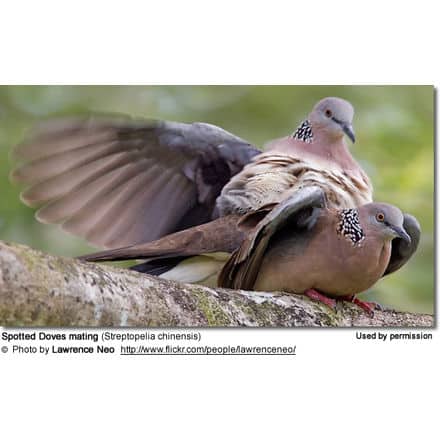
Diet / Feeding
Spotted Doves feed on grains, grass seeds, and bits of other vegetation. They may also enter chicken coops and other animal houses to feed on commercial animal feed.
They are usually seen foraging on the ground, typically feeding alone, in pairs or small groups.
Breeding / Nesting
Within their range, Spotted Doves may breed throughout the year; although most activities are observed between September to January.
Males perform a courtship flight display for the females, which consists of steep rising flights up to 30 or 40 meters (~ 100 – 130 feet) above the ground, then spreading the tail and wings and then swooping downward to a perch in a circular dive.
This display is accompanied by loud wing claps. They may also walk in front of the females fluffing up their black and white neck patches and bowing the head up and down.
Their nests are flimsy, shallow platforms constructed out of sticks, grasses, and roots and most commonly placed low in trees or tall bushes, but they can also be found on the edges of buildings or, occasionally, on the ground.
A clutch consists of 1 – 2 glossy white eggs. Both parents share the incubation of the eggs and the rearing of the chicks.
Calls / Vocalizations / Sounds
Their calls are described as gentle, low coo-croo-coo with emphasis on the last note or soft te-croo-croo vocalizations. On occasion, the calls sound like coo-coo krrroo, krook.
Alternate (Global) Names
Cebuano: Tokmo … Chinese: ????, ???? … Czech: Hrdli?ka kropenatá … Danish: Perlehalsdue … Dutch: Parelhalstortel, Pareltortel … German: Perlhalstaube … Estonian: džungli-turteltuvi … Finnish: Aasiantunturikyyhky … French: Tourterelle à cou maculé, Tourterelle de Chine, Tourterelle tigrée, Tourterelle tigrine … Hindi: Pulli pura … Indonesian: Bokuru, Tekukur, Tekukur Biasa … Italian: Tortora macchiata … Japanese: kanokobato … Korean: ??????? … Malay: Tekukur … Norwegian: Kinesisk turteldue, Perlekragedue … Polish: Synogarlica perloszyja … Russian: ????????? / ????????? ??????? … Slovak: Hrdli?ka perlokrká … Spanish: Tórtola China / Moteada … Swedish: Pärlhalsduva … Thai: ?????????, ????????? … Vietnamese: Cu gáy

